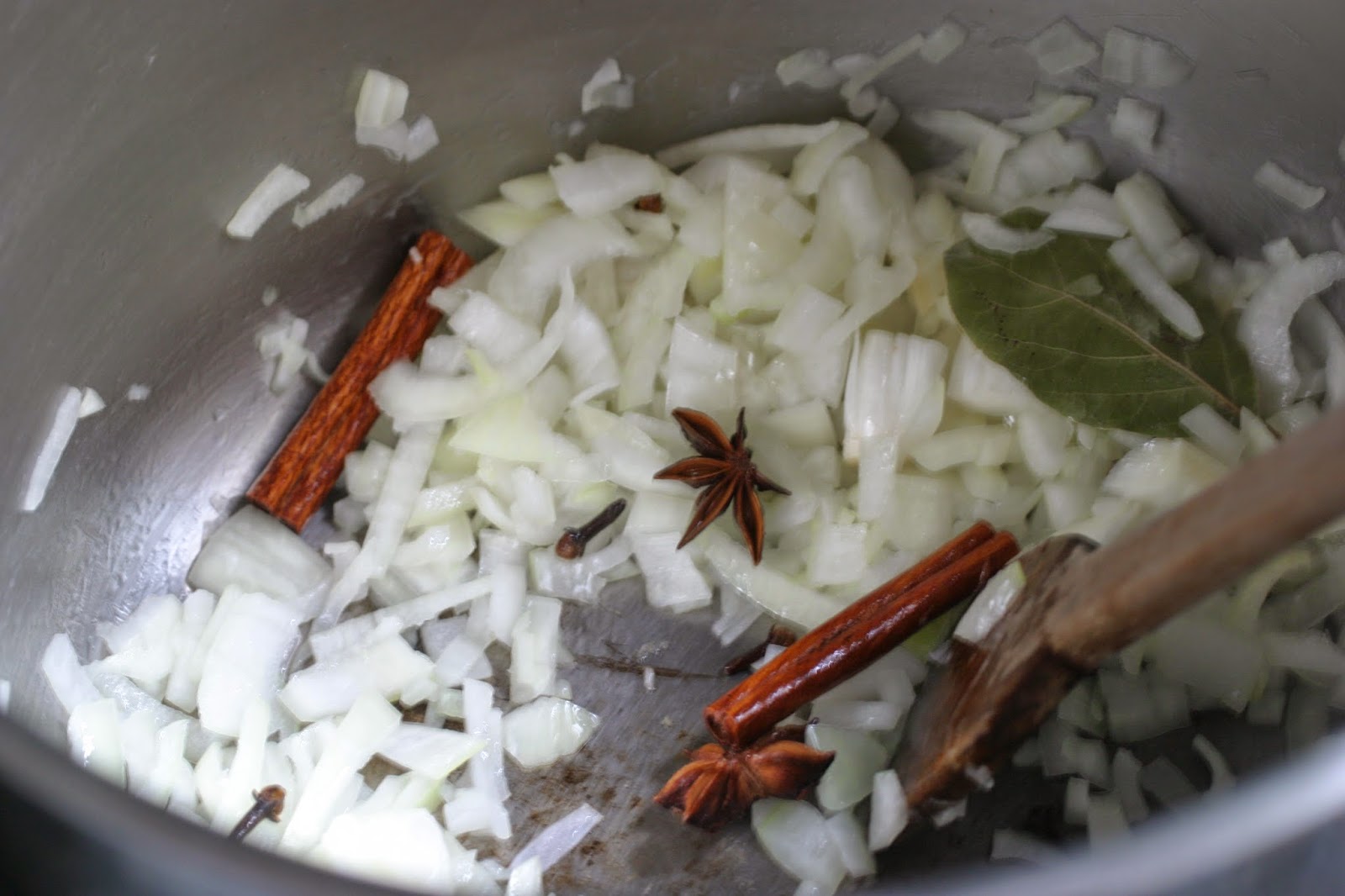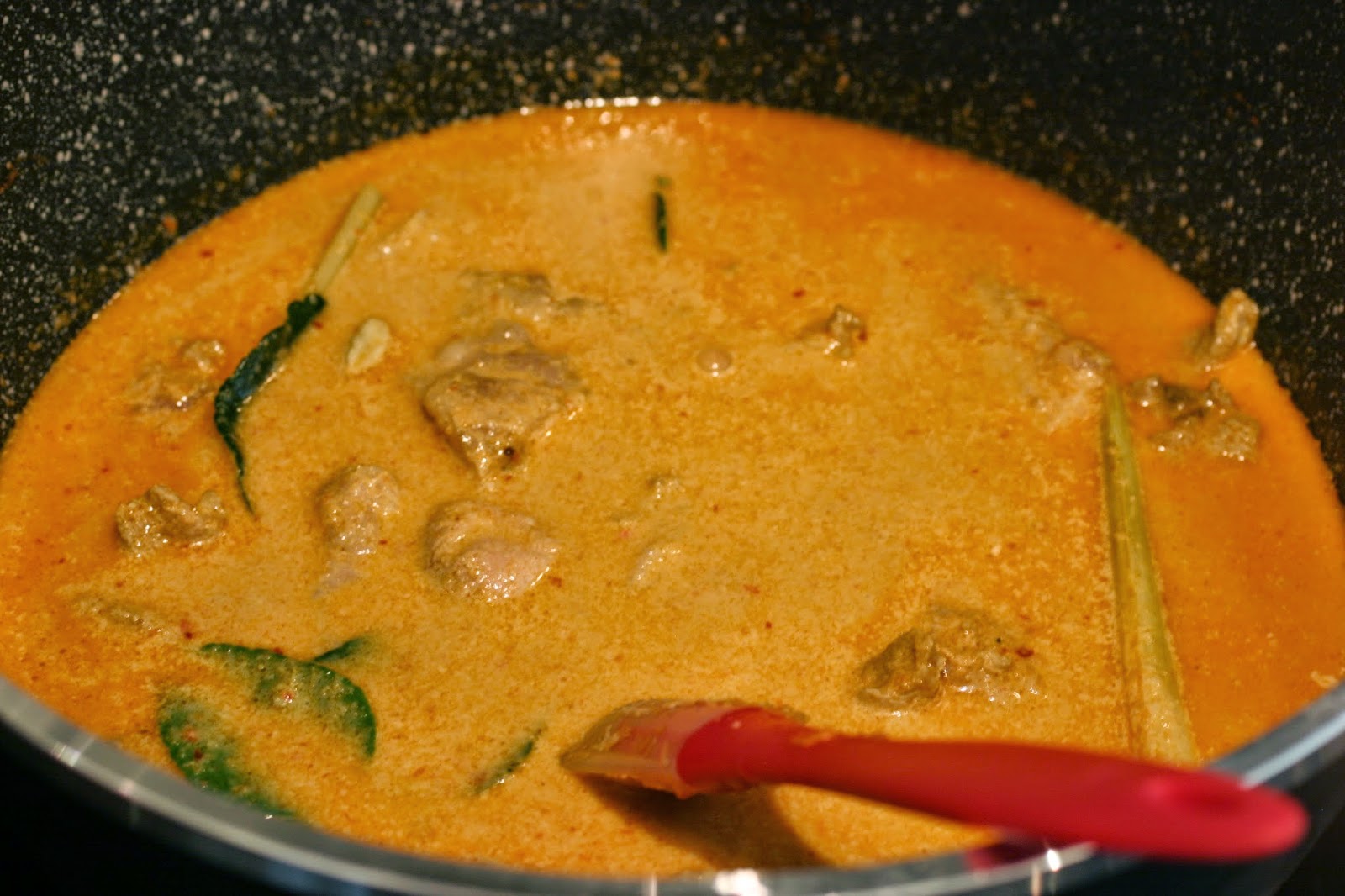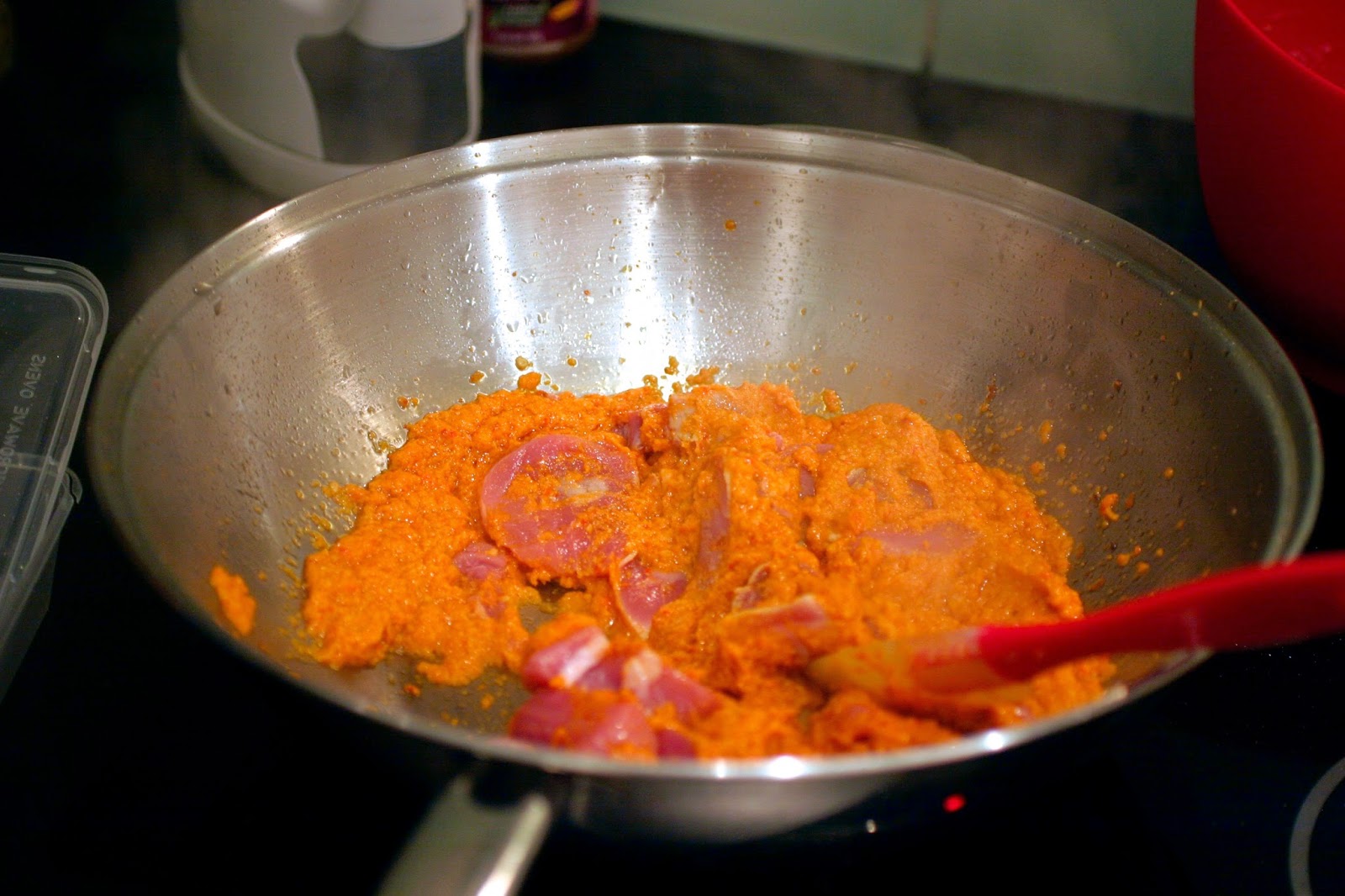This week I was lucky enough to have my cousin visit me for a few days all the way
from the United States. I knew just what to cook to mark the occasion! Now I say this recipe serves three, but not when my cousin is there! He cleaned out my pot of spiced lamb and moved on to the reserved chicken rendang I have in the fridge for my breakfasts since he liked it so much! I think rendang is always appropriate for breakfast, lunch or dinner, and is always the perfect thing to serve guests, so I always have a little stash of it in my fridge! Now, a little history of the dish--
Rendang comes to us from the Minangkabau people from Sumatera Barat (West Sumatra) province. If given a choice it's likely most Indonesian people would say that rendang, along with nasi goreng, are the two foods most representative of Indonesia. Rendang originated when the Minang would slaughter a whole cow or water buffalo, then cook it in a mouthwatering mixture of spices so as to preserve the meat for a long time. Luckily though we have moved past this time before refrigeration and rendang is now commonly made with all sorts of meat, and loved by all sorts of people! Dishes like this allow people to connect with eachother, working together tirelessly to make the rempah, then enjoying stimulating and friendly conversation during the long cooking time, and finally, sharing a delicious meal. I think it is truly in the spirit of the kampung to share this dish which you can find from the fanciest restaurants in Sinagapore to the humblest home kitchens of the Indonesian countryside, being cooked on wood fires.
*P.S. I always use lamb when I make my rendang as I think it is the best meat to go alongside the rendang spices.
Rendang Domba recipe: Serves 2-3
For the rempah (curry paste)
-
1 tsp. serbuk kari daging (optional)
-
1 handful of dried chilis, (about 10-20 depending on preference) soaked in hot water for 20 minutes
-
2 inch knob of peeled ginger*
-
2 inch knob peeled galangal*
Other ingredients
-
2-3 tbsp palm sugar or to taste (gula jawa is best)
-
2 lemongrass, white part only, bashed
-
1 can (400 ml) coconut milk or 200 ml coconut cream
-
3 tbsp tamarind concentrate or to taste
-
1.5 kilos of lamb, I like to buy a whole shoulder, then cut what meat I can off, then throw the bone and any meat left in with he rest. This is fine, as the meat will fall off later anyway. Shoulder is the best cut!
*for ginger and galangal, slice thinly against the fibers of the rhizome. These can be unpleasant in the mouth if left intact and blanding will not shorten them.
Let's start!
First, make the rampah using a food processor, placing one ingredient in the processor and blending until fine before adding the next. Start with the harder ingredients, and add in the softer ones after. The order should be roughly galangal, then ginger, then candlenuts, then garlic, then dried chilis, then fresh chilis, and shallots last, followed by dry spices which can just be mixed in with the paste as they don't need to be blended. Now, heat enough oil to cover the bottom of a soup pot, dutch oven, wok, or faitout (I love to use faitouts for slow cooked dishes like this). Then fry the spice paste for a few minutes until it is nice and fragrant and the oil separates out. The paste should look a little caramelized at this point.
Now throw in the kaffir lime leaves and lemongrass, followed by the lamb meat. Fry the meat in the spices until no longer pink.
Now pour in the tamarind concentrate, followed by the coconut milk/cream. If the milk/cream doesn't cover them meat entirely, add some water. Season with salt, palm sugar, and lemongrass. Drop in the cloves/anise at this time as well. Let this mixture simmer on low heat uncovered for several hours, stirring regularly. Mine took about 5 until it was ready to eat, but time will vary.
Closer to the end, the oil from the coconut will separate and fry the meat in the spice mixture. The rendang should be very dry and have little to no sauce before taking away from heat. When done, serve with rice. Leftovers can be saved in the fridge for about 1.5 months depending on how wet your rendang is. Enjoy!
This finished rendang won't last long at my house!











































